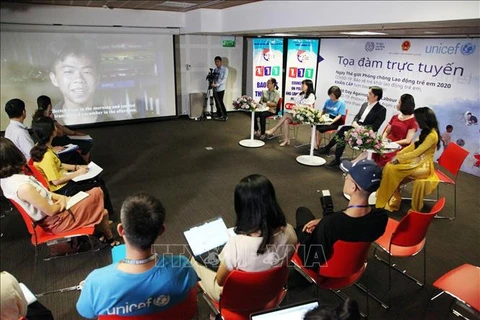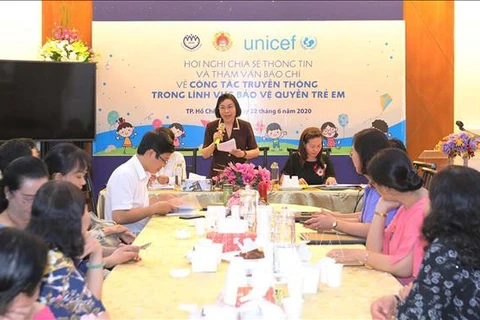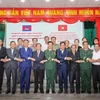Hanoi (VNA) – Vietnam’s child labour rate is approximately 2 percentage points lower than the regional average for Asia and the Pacific, found the second national child labour survey, which was released on December 18.
The survey was conducted by the Ministry of Labour, Invalids and Social Affairs (MoLISA) and the General Statistics Office with technical support from the International Labour Organisation (ILO) from November to December 2018.
It identifies an estimated 9.1 percent of children aged 5-17 engaged in economic activities, and 5.3 percent (or more than 1 million) in child labour.
Compared to findings from the first National Child Labour Survey conducted in 2012, the latest figures point to an encouraging decrease in the prevalence of working children, which dropped from 15.5 percent of children in 2012 to 9.1 percent in 2018.
In line with global trends, 84 percent of children in child labour in Vietnam are concentrated in rural areas and just over half of them work in the agricultural, forestry and fishery sector. Other sectors where child labour is prevalent include the service sector and the industry and construction sector. Notably 40.5 percent of children in child labour work as unpaid family workers.
The survey estimates that nearly 520,000 children in Vietnam are engaged in hazardous child labour, or work which poses significant risks to a child’s health, safety or morals. Children in hazardous child labour are more likely to work in the industry and construction sector, and their hours of work tend to be high, with 40.6 percent of children in this group working for over 40 hours per week.
The survey highlights the adverse impacts of economic engagement on children’s school attendance, with the percentage of children in school decreasing as the intensity of economic engagement rises. Compared to the national average school attendance of 94.4 percent, only half of Vietnamese children in child labour attend school. However, figures indicate a positive trend in the overall percentage of working children attending school, which has risen to 63 percent compared to just 43.6 percent in 2012.
Speaking at the event, MoLISA Deputy Minister Nguyen Thi Ha said that early engagement in work has left serious consequences on children, affecting their harmonious development, hindering them from approaching and enjoying appropriate education and legitimate rights, and negatively impacting socio-economic development, especially the quality of human resources in the future.
ILO Vietnam Director Chang Hee Lee said that although survey findings indicate promising signs of progress between 2012 and 2018, the risk of child labour has now been intensified by the socio-economic impacts of the COVID-19.
Today, in Vietnam and around the world, more families are being forced to resort to child labour as a strategy to cope with loss of income and livelihood constraints resulting from disruptions to global supply chains and social distancing measures. In light of the devastating floods that have affected the central region of Vietnam this year, this risk has further intensified for affected families, who face the double burden of the pandemic and climate-related catastrophe, he stated.
Chang urged that actions must be taken to mitigate the detrimental effects of the pandemic and the increasing threat of natural disasters, which risk jeopardizing hard won gains in combatting child labour, and may lead to a rise in new cases. As such, national efforts must be urgently accelerated towards Sustainable Development Goal (SDG) Target 8.7 to end child labour in all its forms. As a pathfinder country for Global Alliance 8.7, Vietnam is committed to conducting research, sharing knowledge and driving innovation towards this goal./.
VNA
























